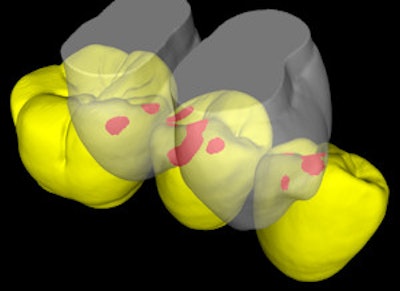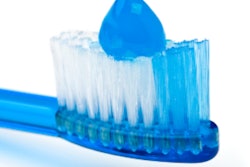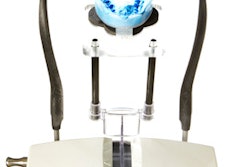
German researchers have used digital technology to show that the widespread loss of enamel and dentine at the base of molar crown might be linked to tooth wear in industrialized societies, according to a new study in PLoS One (April 24, 2013).
Scientists of the Max Planck Institute for Evolutionary Anthropology in Leipzig and the Senckenberg Research Institute in Frankfurt worked with dental technicians to digitally analyze modern human teeth using an engineering approach to evaluate the biomechanical behavior of teeth under realistic loading.
 This image shows collision detection (red areas) between the lower right premolars and first molar and the upper right premolars. Image courtesy of the Max Planck Institute for Evolutionary Anthropology.
This image shows collision detection (red areas) between the lower right premolars and first molar and the upper right premolars. Image courtesy of the Max Planck Institute for Evolutionary Anthropology.
The researchers used finite element analysis and an occlusal fingerprint analyzer developed at the Senckenberg Institute to determine tooth-to-tooth contact. To investigate changes in the stress pattern in the same tooth crowns with varying tooth wear, they artificially abraded two premolars in the laboratory, based on occlusal movement. The simulation made it possible to calculate the changes in the stress pattern, depending on the wear stage.
The computer simulation of chewing forces created high-tensile stresses exactly in the cervical areas where tooth lesions are frequently found in teeth, the researchers noted in a news release. The stress in the teeth with advanced wear shows a far better distribution of the loads over the whole tooth crown, so that the tensile stresses will be significantly reduced, they added.
"Evolutionary factors have apparently led to a quite successful compromise between material loss and longest possible preservation of function," said lead author Stefano Benazzi, PhD, of the Max Plank Institute for Evolutionary Anthropology.
The extension of the life span and the quick changes in our lifestyle with a remarkable reduction in tooth wear present a major challenge for modern dentistry, he and his colleagues added.



















